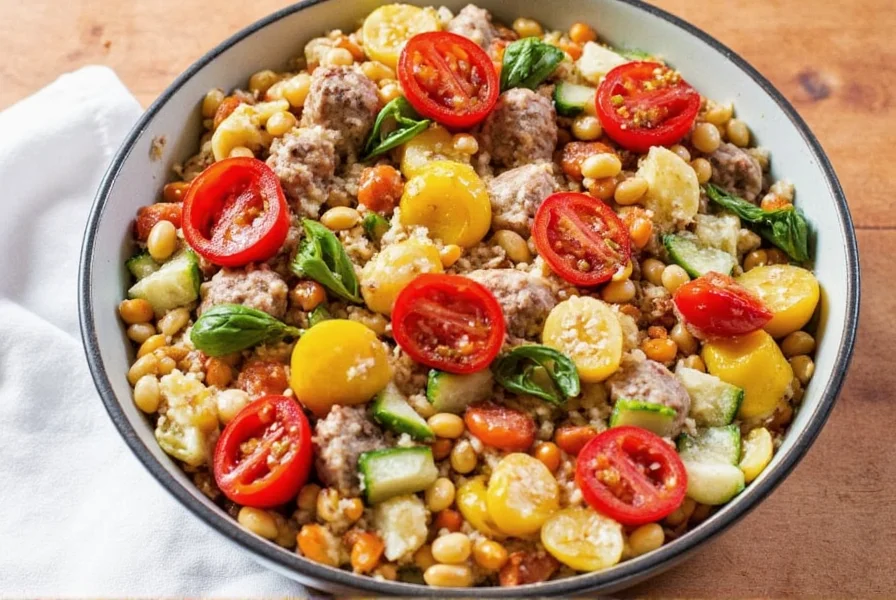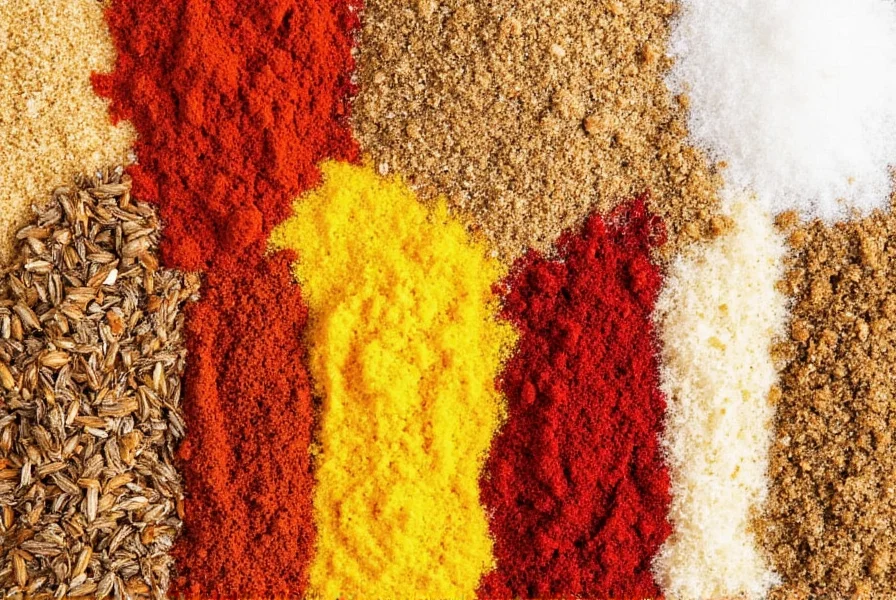When you search for the Mediterranean diet, you're likely looking for clear, evidence-based information on its origins, health benefits, and how to incorporate it into your daily life. This article provides accurate, well-researched details about the Mediterranean diet's historical roots, regional spice variations, and practical applications for home cooking. We'll explore how trade routes shaped its flavor profile, what makes it one of the world's healthiest dietary patterns, and how you can easily adopt its principles.
| Region | Signature Spices | Typical Dishes | Flavor Profile |
|---|---|---|---|
| Greece | Oregano, Dill, Garlic | Moussaka, Greek salad, Avgolemono | Earthy, bright, fresh |
| Italy | Basil, Rosemary, Fennel Seeds | Pesto pasta, focaccia, grilled lamb | Herbaceous, aromatic, balanced |
| Turkey / Middle East | Cumin, Paprika, Za'atar | Hummus, falafel, shawarma | Warm, smoky, exotic |
| Morocco | Cinnamon, Cayenne, Ginger | Tagine, couscous, mint tea | Sweet-spicy, complex, fragrant |

Where Does the Mediterranean Diet Come From?
The Mediterranean diet didn't start as a modern fad or celebrity-endorsed meal plan—it evolved organically from the traditional eating habits of people living in countries bordering the Mediterranean Sea. These include Greece, Italy, Spain, Turkey, Morocco, and parts of the Middle East and North Africa.
Archaeological evidence shows that the core principles of this dietary pattern date back approximately 3,000 years to ancient agricultural societies around the Mediterranean basin. Early communities cultivated olives, grapes, and grains as far back as 1500 BCE, establishing the foundation for what we now recognize as this iconic dietary pattern.
How Trade Routes Shaped Mediterranean Spices
One often overlooked factor in the evolution of the Mediterranean diet is the influence of trade routes. The Silk Road and maritime spice trade introduced new flavors and ingredients into local cuisines, particularly in coastal cities. Spices such as cumin, cinnamon, coriander, and saffron made their way from the East, enriching Mediterranean dishes with depth and aroma.
Maritime and overland trade routes connected Mediterranean regions with spice-producing areas in Asia and Africa. Cumin arrived from Egypt, saffron from Persia, and cinnamon via Arabian traders. These ingredients were gradually incorporated into local cooking, creating distinct regional spice blends like za'atar in the Levant and ras el hanout in Morocco that define Mediterranean cuisine today.
Practical Tips for Using Mediterranean Spices at Home
If you're new to Mediterranean cooking or want to elevate your dishes, here are some practical, chef-approved tips to help you make the most out of these vibrant spices:
- Toasting spices brings out flavor: Gently toast whole spices like cumin seeds or coriander in a dry pan before grinding them for more aromatic results.
- Combine with citrus for brightness: Mediterranean cuisine loves lemon! Pair lemon zest with oregano or za'atar for a zesty punch.
- Use fresh herbs when possible: Basil, parsley, and dill can take a dish from good to great—just toss them in at the end for maximum freshness.
- Create your own spice blends: Mix cumin, paprika, garlic powder, and salt to mimic popular Middle Eastern rubs, or blend sumac and thyme for homemade za'atar.
- Store spices properly: Keep them in airtight containers away from heat and light to preserve potency and flavor longer.

Buying Guide: Top Mediterranean Spice Blends
Ready to dive into Mediterranean flavor without spending hours blending your own spices? Here's a curated list of ready-made spice blends that deliver authentic taste with convenience.
1. Harissa Blend – Perfect for Heat Lovers
- Features: Smoky, spicy, slightly sweet.
- Best Use: Grilled meats, stews, and spreads.
- Target Audience: Fans of bold, fiery flavors.
- Occasion: Summer barbecues, mezze platters.
2. Za'atar – Tangy and Herby
- Features: Earthy thyme, tangy sumac, sesame seeds.
- Best Use: Sprinkled over flatbreads, labneh, or mixed into olive oil for dipping.
- Target Audience: Those who love complex, layered flavors.
- Occasion: Breakfast bowls, Middle Eastern-inspired appetizers.
3. Italian Herb Blend – Versatile and Comforting
- Features: Combination of basil, oregano, rosemary, and marjoram.
- Best Use: Pizza dough, marinades, roasted veggies.
- Target Audience: Everyday cooks and Italian food lovers.
- Occasion: Family dinners, weekend baking.
4. Ras el Hanout – Deep and Mysterious
- Features: A complex blend of up to 30 spices, including cardamom, cumin, allspice, and turmeric.
- Best Use: Tagines, slow-cooked meats, rice dishes.
- Target Audience: Adventurous home chefs and flavor seekers.
- Occasion: Special occasions, dinner parties.
5. Mediterranean Salt Blend – All-in-One Seasoning
- Features: Garlic, onion, oregano, lemon peel, sea salt.
- Best Use: Everything from salads to roasted chicken.
- Target Audience: Beginners and busy cooks.
- Occasion: Quick weeknight meals, snacking bowls.
Frequently Asked Questions (FAQ)
Where does the Mediterranean diet come from?
The Mediterranean diet originates from the traditional eating patterns of countries bordering the Mediterranean Sea, including Greece, Italy, Spain, Turkey, Morocco, and parts of the Middle East and North Africa. Its foundations trace back to ancient civilizations like the Greeks and Romans who relied on locally available foods such as grains, legumes, fruits, olive oil, and fish.
How old is the Mediterranean diet?
The core principles of the Mediterranean diet date back approximately 3,000 years to ancient agricultural societies around the Mediterranean basin. Archaeological evidence shows that early Mediterranean communities cultivated olives, grapes, and grains as far back as 1500 BCE, establishing the foundation for what we now recognize as this iconic dietary pattern.
Why is spice so integral to the Mediterranean diet?
Spices became essential through ancient trade routes like the Silk Road, which introduced ingredients such as cumin, cinnamon, and saffron from Asia and the Middle East. These spices transformed regional cuisines by adding complexity, preserving food, and providing health benefits—making them central to the Mediterranean diet's flavor identity and longevity.
Is the Mediterranean diet originally from Greece?
While Greece is often highlighted in modern discussions (especially due to Ancel Keys' 1950s research), the Mediterranean diet represents a collective tradition across multiple coastal nations. Greece is one key region where traditional practices were documented, but the diet equally reflects Italian, Spanish, North African, and Middle Eastern culinary heritage developed over millennia.
How did trade shape the Mediterranean diet's spice profile?
Maritime and overland trade routes connected Mediterranean regions with spice-producing areas in Asia and Africa. Cumin arrived from Egypt, saffron from Persia, and cinnamon via Arabian traders. These ingredients were gradually incorporated into local cooking, creating distinct regional spice blends like za'atar in the Levant and ras el hanout in Morocco that define Mediterranean cuisine today.










 浙公网安备
33010002000092号
浙公网安备
33010002000092号 浙B2-20120091-4
浙B2-20120091-4